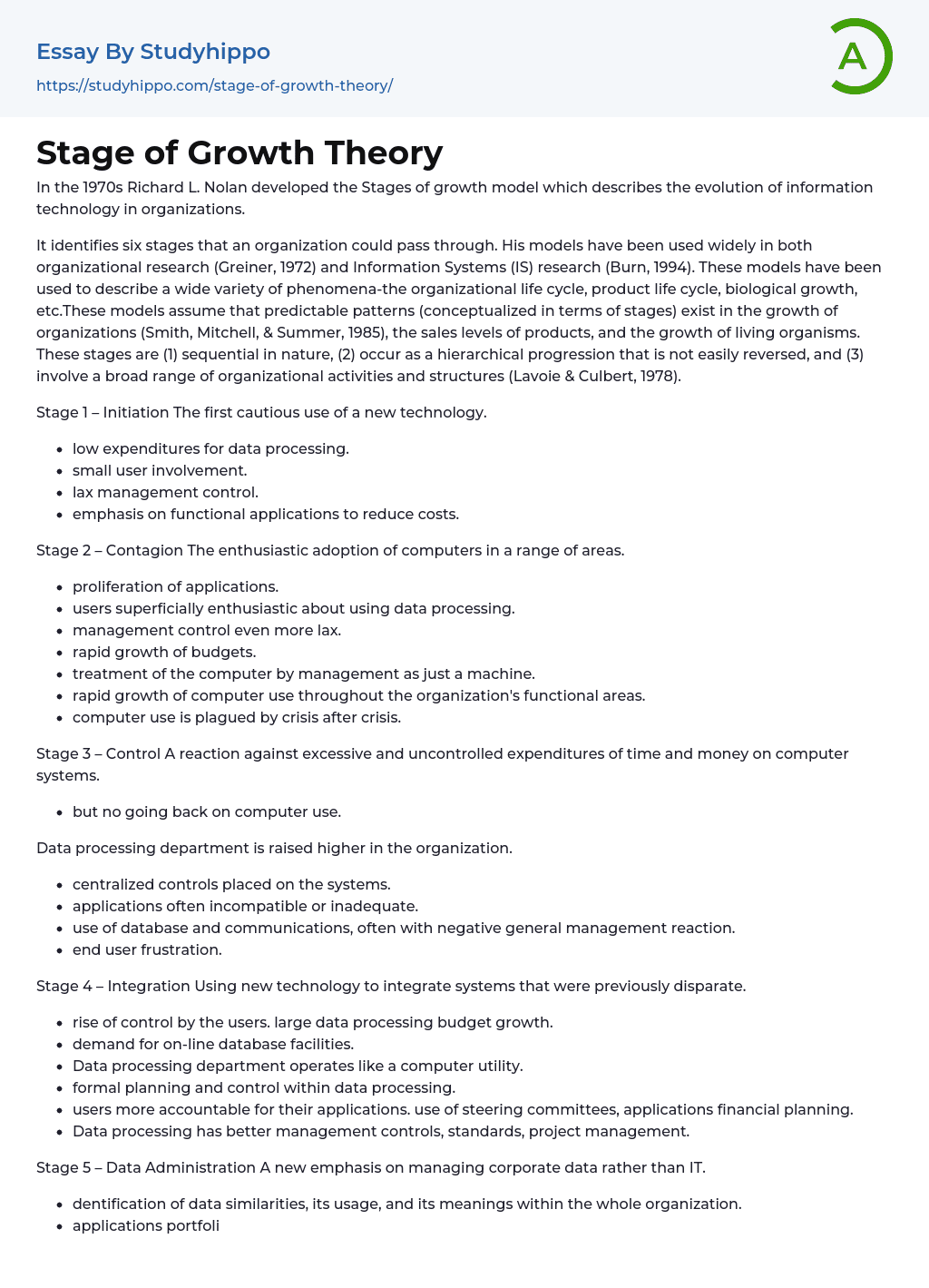In the 1970s Richard L. Nolan developed the Stages of growth model which describes the evolution of information technology in organizations.
It identifies six stages that an organization could pass through. His models have been used widely in both organizational research (Greiner, 1972) and Information Systems (IS) research (Burn, 1994). These models have been used to describe a wide variety of phenomena-the organizational life cycle, product life cycle, biological growth, etc.These models assume that predictable patterns (conceptualized in terms of stages) exist in the growth of organizations (Smith, Mitchell, & Summer, 1985), the sales levels of products, and the growth of living organisms. These stages are (1) sequential in nature, (2) occur as a hierarchical progression that is not easily reversed, and (3) involve a broad range of organizational activities and structures (Lavoie & Culbert, 1978).
Stage 1 – Initiation The first cautious use of a new technology.
- low expenditures for data processing.
- small user
...involvement.
- lax management control.
- emphasis on functional applications to reduce costs.
Stage 2 – Contagion The enthusiastic adoption of computers in a range of areas.
- proliferation of applications.
- users superficially enthusiastic about using data processing.
- management control even more lax.
- rapid growth of budgets.
- treatment of the computer by management as just a machine.
- rapid growth of computer use throughout the organization's functional areas.
- computer use is plagued by crisis after crisis.
Stage 3 – Control A reaction against excessive and uncontrolled expenditures of time and money on computer systems.
- but no going back on computer use.
Data processing department is raised higher in the organization.
- centralized controls placed on the systems.
- applications often incompatible or inadequate.
- use of database and communications, often with negativ
View entire sampleJoin StudyHippo to see entire essay
general management reaction.
Stage 4 – Integration Using new technology to integrate systems that were previously disparate.
- rise of control by the users. large data processing budget growth.
- demand for on-line database facilities.
- Data processing department operates like a computer utility.
- formal planning and control within data processing.
- users more accountable for their applications. use of steering committees, applications financial planning.
- Data processing has better management controls, standards, project management.
Stage 5 – Data Administration A new emphasis on managing corporate data rather than IT.
- dentification of data similarities, its usage, and its meanings within the whole organization.
- applications portfolio is integrated into the organization.
- Data processing department serves more as an administrator of data resources than of machines.
- use of term IT/IS rather than data processing.
Stage 6 – Maturity Systems that reflect the real information needs of the organization. use of data resources to develop competitive and opportunistic applications.
- Data processing organization viewed solely as a data resource function.
- Data processing emphasis on data resource strategic planning.
- •ultimately users and DP department jointly responsible for the use of data resources within the organization.
- Manager of IT system takes on the same importance in the organizational hierarchy as say the director of finance or director of HR Source: http://en. wikipedia. org/wiki/Stages_of_growth_model http://www. jstor.org/pss/248913 http://findarticles. com/p/articles/mi_qa3713/is_199704/ai_n8770932
- Computer File essays
- Desktop Computer essays
- Servers essays
- Computer Components essays
- Personal Computer essays
- Computer Peripherals essays
- Flowchart essays
- Integrated Circuit essays
- Tracking system essays
- Hard Disk Drive essays
- Camera essays
- Cell Phones essays
- Computer essays
- Ipod essays
- Smartphone essays
- Cloud Computing essays
- Computer Science essays
- Consumer Electronics essays
- Data Analysis essays
- Electronics essays
- engineering essays
- Enterprise Technology essays
- Hardware essays
- Impact of Technology essays
- Information Age essays
- Information Technology essays
- Modern Technology essays
- Operating Systems essays
- people search essays
- Robot essays




